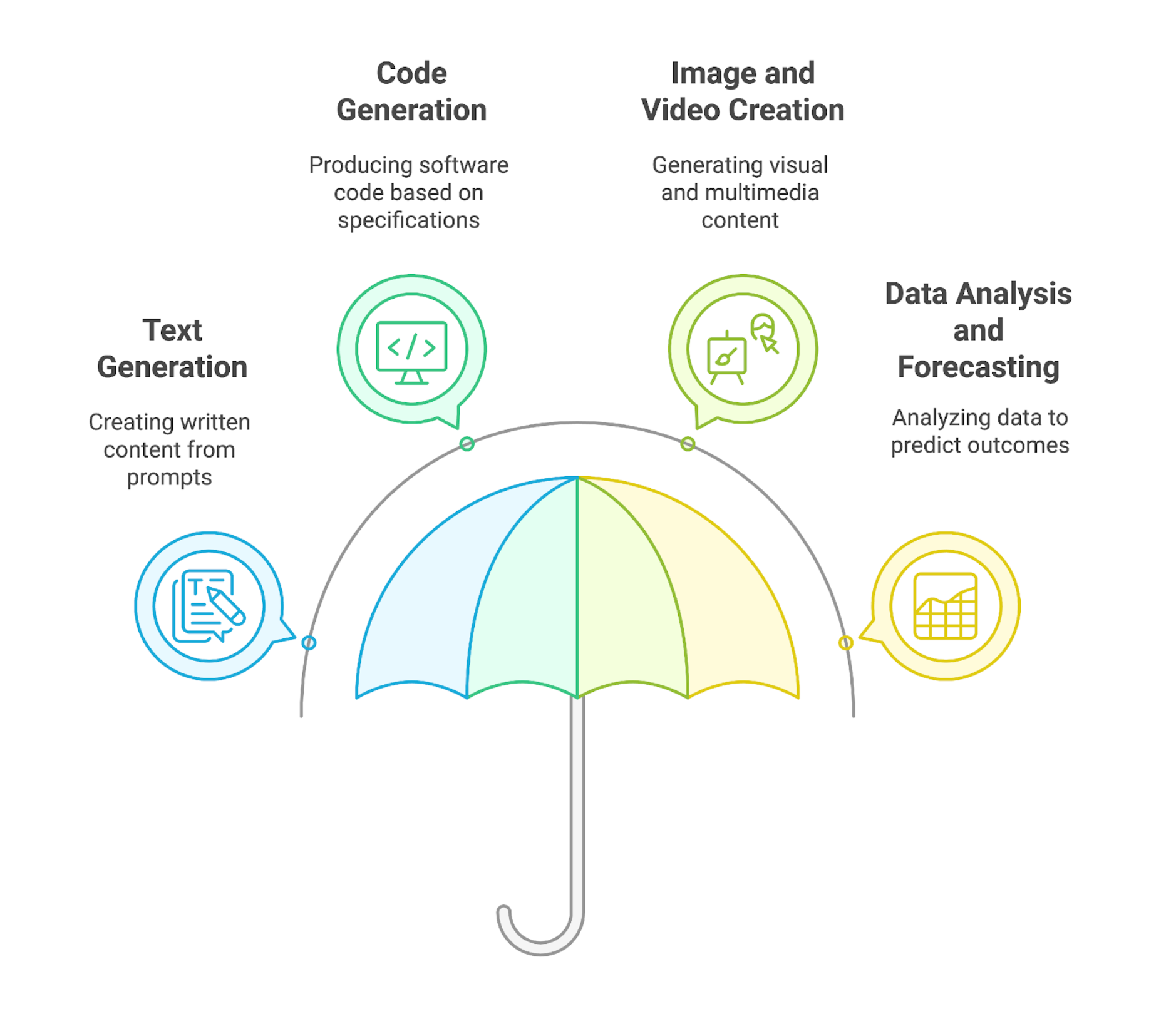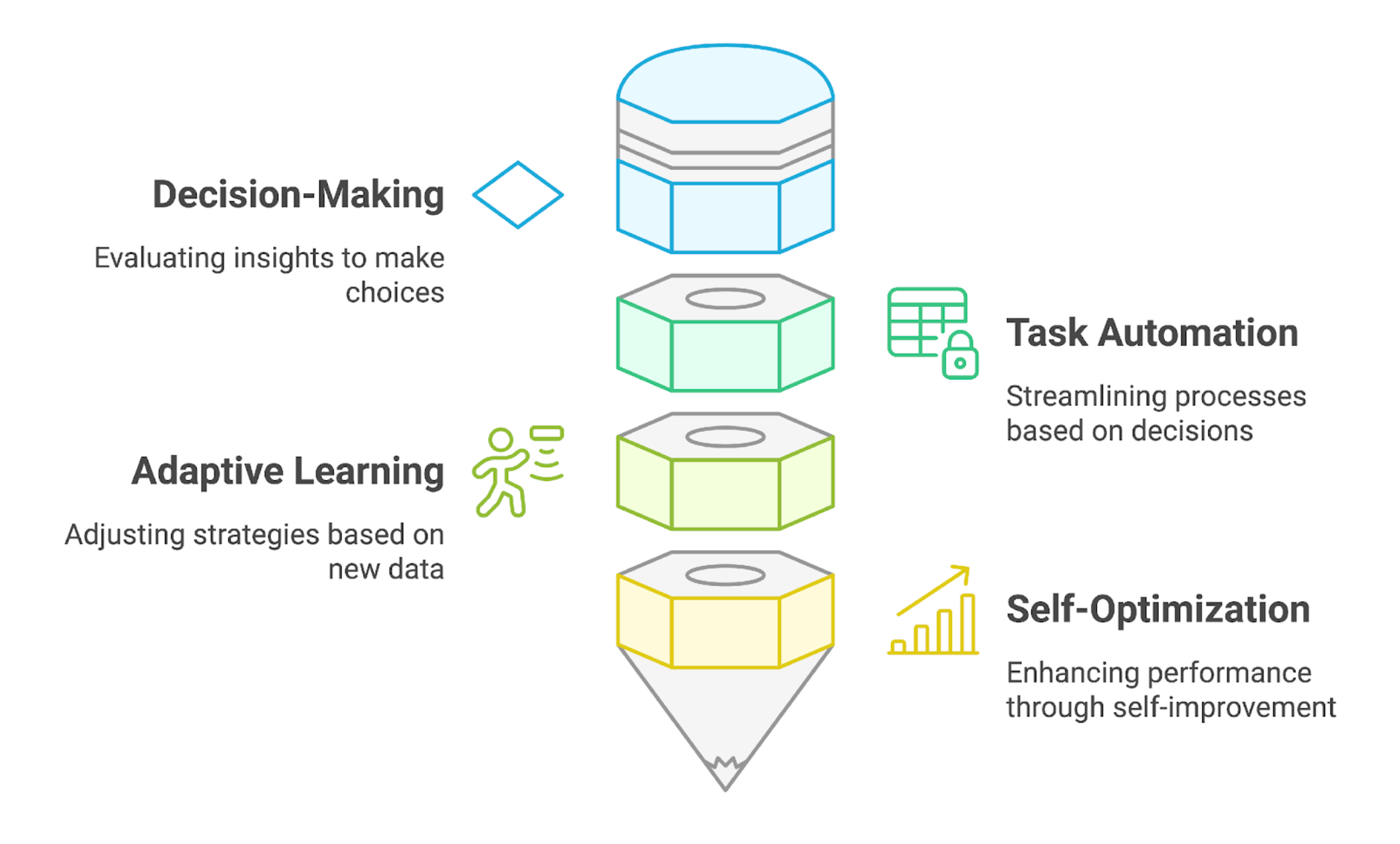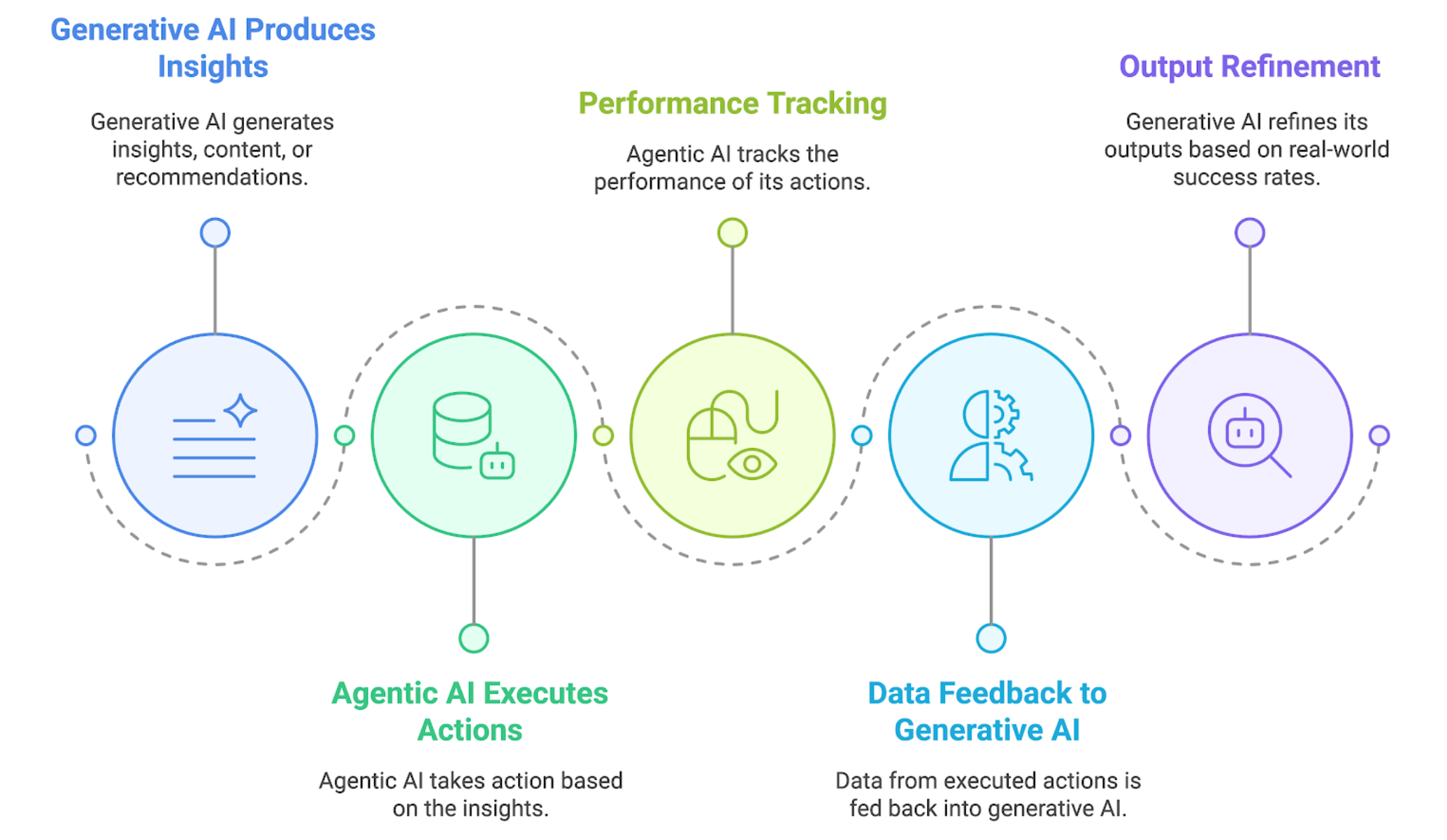Agentic AI and Generative AI: Revolutionizing Decision Making and Automation
This article examines both agentic and generative AI systems, their relative benefits and drawbacks, their implementation challenges with ethical risks, and more.
Join the DZone community and get the full member experience.
Join For FreeEditor's Note: The following is an article written for and published in DZone's 2025 Trend Report, Generative AI: The Democratization of Intelligent Systems.
The rapid advancement of artificial intelligence (AI) creates breakthroughs that span multiple industries. Among many developments, agentic AI and generative AI stand out as two transformative powers. Although these systems work differently because they serve distinct functions, they bring substantial benefits when used together. Generative AI focuses on content creation through deep learning transformer models that learn from extensive datasets. This technology enables increased human productivity in content creation tasks as well as design, marketing activities, and software development by delivering text, images, code, and music outputs.
On the other hand, agentic AI extends beyond content generation to cover goal-oriented execution and autonomous decision-making systems. Agentic AI exists to automate tasks, which helps businesses run more efficiently by reducing human involvement.
This AI landscape presents businesses, developers, and researchers with essential needs to understand the core characteristics of AI paradigms, along with their individual strengths and limitations and their synergistic benefits. This article examines both AI systems, relative benefits and drawbacks, and their implementation challenges together with ethical risks and how their combined use creates intelligent automation and industry-driven innovation.
Agentic AI vs Generative AI: A Comparative Analysis
Though both systems are based on machine learning (ML) and automation, they serve distinct purposes and function differently across implementation and application domains.
| Aspect | Agentic AI | Generative AI |
|---|---|---|
| Purpose | Task execution, decision making, and workflow automation | Content creation (text, image, videos) |
| Operational mode | Autonomous action and iterative learning | Predictive modeling and pattern recognition |
| Domain specialization | Best suited for automation in IT, cybersecurity, and finance | Best for creative applications like writing, image generation, and software development |
| Interaction with users | Primarily operates in the background, executing tasks | Direct interaction with users via chatbots, image generation, or coding assistance |
| Autonomy level | Highly autonomous, operates without constant human input | Requires human prompts and oversight |
Table 1. Key differences between agentic and generative AI
Despite the differences between them, there are some similarities between generative AI and agentic AI.
| Features | Agentic AI | Generative AI |
|---|---|---|
| ML dependency | Uses ML to drive decision making and automation | Uses ML for generating content and predictions |
| Data driven | Requires structured datasets for decision making | Learns from vast amounts of unstructured data |
| Enhances productivity | Automates workflows and reduces human intervention | Assists in content creation, accelerating tasks |
Table 2. Key similarities between agentic and generative AI
Synergistic Potential: Combining Agentic and Generative AI
Rather than competing, agentic and generative AI can be integrated to create advanced AI systems capable of both content generation and autonomous execution.
How They Work Together
When generative AI and agentic AI work together, they produce an integrated system that combines generative AI's creative intelligence with agentic AI's autonomous execution. The combination drives improvements in automation decision making and workflow efficiency, resulting in self-improving intelligent systems.
Generative AI Generates Insights
As a content creator, generative AI produces both structured and unstructured outputs using input prompts and training datasets. The outputs serve as foundational knowledge for decision making and automation.
Generative AI performs several functions: It enables chatbots to generate personalized responses, and it assists developers by aiding them in writing and debugging software programs during code generation. Data analysis, forecasting, and image/video creation are essential functions within media and advertising that produce valuable insights and predictions. Figure 1 illustrates the multifaceted role of generative AI.

Figure 1. The multifaceted role of generative AI
Agentic AI Executes Actions
Generative AI offers important insights, but agentic AI goes above and beyond by generating decisions and performing actions. Agentic AI systems use generative AI outputs and then apply those outcomes to actual situations. These systems play a crucial role in decision making by leveraging AI-generated reports and insights to take the right actions. They perform workflow tasks using pre-defined rules and have adaptive capabilities in case of dynamic changes.
The systems also incorporate adaptive learning, modifying strategies based on real-time feedback. These AI agents self-optimize as they engage in this process over time and, therefore, enhance their own efficiency through the evaluation of previous results.
For example, as a virtual AI assistant in enterprise automation, generative AI can create reports, and agentic AI will advance this by delivering reports to stakeholders, organizing follow-up meetings, and initiating business processes according to the findings. Figure 2 demonstrates the various roles of agentic AI.

Figure 2. The roles of agentic AI
Feedback Loop: Continuous Improvement
The real strength of a union between generative AI and agentic AI stems from their capacity to build a loop of improving performance, which boosts precision while cutting execution time and enhancing decision quality as they progress. The process starts when generative AI produces insights and content recommendations that agentic AI evaluates and implements. After execution, agentic AI tracks performance and collects real-world data, feeding it back into generative AI, which uses success rates and evolving requirements to refine its future output generation. The combination of learning with execution alongside optimization enables AI-driven systems to build their effectiveness and adaptability through continuous improvement.
Let's take an example of an e-commerce platform that uses generative AI to develop product descriptions, and then agentic AI measures customer interaction data to optimize content strategies in real time. In the same manner, generative AI produces initial software code while agentic AI systems handle testing, deployment, and code refactoring tasks within continuous integration and deployment pipelines to deliver ongoing enhancement and optimization.
The organizations that implement this loop of feedback, as shown in Figure 3, will develop intelligent systems that adapt to changing demands while achieving better outcomes.

Figure 3. AI feedback loop process
Challenges and Ethical Considerations
Despite their advantages, the integration of agentic and generative AI poses several challenges.
Security Concerns
The increasing complexity of AI models leads to major security risks, including data weaknesses and model vulnerabilities. The foremost risk in AI technology is data security because models often reveal personal information about users accidentally. AI models are large token sequencers that require broad datasets for training and response generation, making data breaches possible through poor data management and system defects.
In 2023, OpenAI's ChatGPT faced a major data leak when a bug enabled users to view other users' chat history, including payment details. This incident revealed major security issues with interactive AI applications that process personal information. OpenAI took responsibility for the problem and implemented a fix, but the incident showed how essential it is to strengthen AI interaction with data protection.
Model exploitation represents another major risk, which involves using AI-generated content for harmful activities. Deepfake technology alongside other generative AI models have been used to spread false information and political statements as well as fraudulent content. AI-generated videos showing Ukrainian President Volodymyr Zelensky claiming Ukraine surrendered during the Russia-Ukraine war reached online audiences. The fabricated AI-generated videos created confusion and panic due to their realistic nature, which tricked viewers into believing and spreading them through social media and other online platforms.
Organizations need to build strong governance frameworks coupled with transparency and security features to manage these risks as AI adoption grows. Organizations should practice protected data privacy audits on content produced by AI systems to avoid potential misuse and monitor the systems as a protective measure.
Ethical Challenges
As AI systems expand their use in decision making across all industries, the issues of bias in AI models and responsible usage remain prominent ethical concerns. AI systems are trained with huge datasets that frequently hold historical biases that lead to unfair results in areas like hiring, finance, and law enforcement.
Amazon's AI-powered hiring tool, which exhibited gender bias, provides a well-documented example of AI bias. During its training period spanning over a decade, the system learned to favor male candidates because resumes from men made up most of its submissions. Amazon ended the use of the tool after tests showed that it rated resumes with "women" in the description lower than those with more traditional male-dominated work terms. The case shows how societal biases can become embedded in AI models and shows why bias mitigation strategies are needed to produce fair and inclusive AI systems.
The use of AI also requires responsibility because, without it, we risk unwanted effects that cannot be controlled. AI models are usually opaque, i.e. black boxes, and one cannot easily understand how and why a decision was made. This lack of interpretability is even more worrying in industries such as healthcare and finance, where the recommendations from AI can significantly impact a human's life.
Conclusion
Agentic AI and generative AI cause industrial shifts through their capability to create innovative decision-making systems and generative content platforms. Agentic AI improves automation through the execution of tasks and workflow optimization, while generative AI drives innovation through text, image, and code production. The integration of these products proves dangerous because they produce major ethical problems and serious security risks, such as data weaknesses and biased AI outputs alongside the exploitation of AI models. The necessary solution for these concerns demands a sustained commitment to AI innovation's ethical standards.
Businesses, developers, and policymakers should establish a governance system and implement fairness verification and security measures to support ethical AI usage. A successful strategy in the future requires organizations to evaluate AI integration opportunities while practicing responsible AI ethics, keeping track of AI technological progress to gain maximal benefits, and reducing associated risks. Businesses must maintain proper human oversight to achieve efficient operation with trustworthy AI systems that power technological advancement and social gain.
References:
- "Insight - Amazon scraps secret AI recruiting tool that showed bias against women" by Jeffrey Dastin
- Getting Started With Agentic AI by Lahiru Fernando, DZone Refcard
- "March 20 ChatGPT outage: Here's what happened" by OpenAI
- "Deepfake presidents used in Russia-Ukraine war" by Jane Wakefield
This is an excerpt from DZone's 2025 Trend Report, Generative AI: The Democratization of Intelligent Systems
Read the Free Report
Opinions expressed by DZone contributors are their own.

Comments